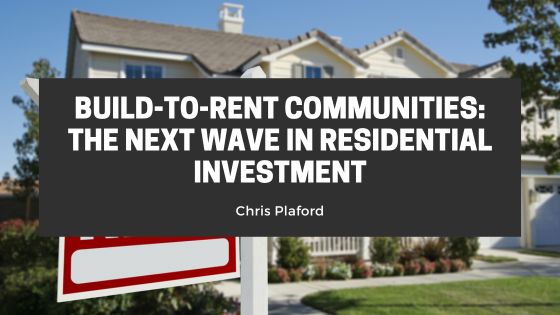In recent years, a significant shift has taken place in the residential real estate market, with Build-to-Rent (BTR) communities emerging as a powerful trend. Once considered a niche strategy, BTR is now capturing the attention of developers, institutional investors, and renters alike. With housing affordability challenges and lifestyle preferences evolving, this investment model is proving to be a resilient and forward-thinking solution in today’s dynamic market.
What Are Build-to-Rent Communities?
Build-to-Rent communities are residential neighborhoods specifically developed with the intention of renting, rather than selling, single-family homes. These properties are often located in suburban or exurban areas and feature thoughtfully designed homes with modern amenities, professional property management, and shared community spaces such as pools, gyms, and dog parks.
Unlike traditional rentals that are scattered across neighborhoods or multifamily apartment buildings, BTR communities offer the feel of a homeowner neighborhood with the flexibility and convenience of renting.
Why Are Investors Paying Attention?
Several factors make BTR an attractive option for investors:
- Stable Cash Flow:
With long-term leases and increasing demand for rental homes, BTR properties can provide consistent and predictable income streams. - Lower Turnover:
Renters in BTR communities, especially families, tend to stay longer than those in urban apartments. This leads to reduced vacancy rates and lower turnover costs. - Institutional Appeal:
Real estate investment firms and private equity groups are entering the BTR space in large numbers. They are drawn by the scalability, portfolio diversification, and reliable performance of these assets. - Growing Renter Demographic:
Millennials delaying homeownership, Gen Z entering the rental market, and retirees seeking maintenance-free living all contribute to a growing pool of potential renters.
The Renter’s Perspective
For many individuals and families, BTR communities offer an ideal living situation. Residents enjoy the privacy and space of a single-family home, along with the perks of managed maintenance, updated finishes, and amenities typically found in upscale apartment complexes. They also appreciate the flexibility that renting provides—without the burden of property taxes or repair responsibilities.
Challenges and Considerations
While the outlook for BTR is strong, it’s not without challenges. Developers must consider zoning laws, rising construction costs, and the availability of land in desirable areas. Moreover, maintaining community quality and managing large portfolios effectively will be crucial for long-term success.
The Future of Residential Investment
As affordability pressures continue and lifestyle trends evolve, Build-to-Rent communities are well-positioned to meet the demands of modern renters. For investors seeking a balance of yield, growth, and stability, BTR represents a compelling opportunity.
Whether you’re a developer exploring new opportunities or a renter looking for more space and flexibility, Build-to-Rent is more than a passing trend—it’s a transformative force in the housing market.
